GASTRONOMY OF TABASCO
Typical Food of TABASCO
Tabasco, a state located in the southeast of Mexico, is renowned for its rich culinary heritage. The gastronomy of Tabasco is a reflection of the diverse cultures that have influenced the region throughout its history. From the indigenous Maya and Olmec people to the Spanish colonizers, the flavors of Tabasco have been shaped by a unique blend of ingredients and techniques.
One of the most prominent features of Tabasco’s cuisine is its use of chili peppers. The state is known for its production of habanero peppers, which are considered to be one of the hottest chili peppers in the world. Habanero peppers are used in a variety of dishes, including salsas, stews, and soups. They add a distinctive smoky flavor and a fiery kick to the food.
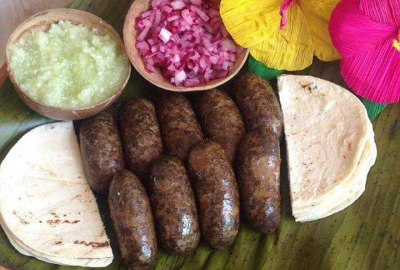
Another important ingredient in Tabasco’s cuisine is seafood. The state has a long coastline on the Gulf of Mexico, and fishing is a significant industry. Fresh seafood, such as shrimp, fish, and crab, is commonly used in traditional dishes such as “pan de cazon,” a breaded and fried shark sandwich, and “pescado a la talla,” a grilled fish marinated in a spicy chili sauce.
Tabasco’s gastronomy also has strong African influences. During the colonial period, many enslaved Africans were brought to the region to work on plantations. They brought with them their own culinary traditions, which were then integrated into the local cuisine. One of the most famous dishes with African roots is “dzotobichay,” a stew made with black-eyed peas, pork, and chili peppers.
In addition to its diverse flavors, Tabasco’s cuisine also has a strong connection to its history and culture. Many traditional dishes are served at celebrations and religious ceremonies, The gastronomy of Tabasco is a reflection of the diverse cultures that have shaped the region throughout its history. The use of chili peppers, seafood, and African influences, along with a strong connection to its history and culture, make Tabasco’s cuisine a unique and delicious experience. Whether you’re a food lover or just looking for a new culinary adventure, Tabasco is a destination that should not be missed.
Typical Dishes of TABASCO
Pejelagarto asado (Roasted alligator-fish)
It is made with the fish species called “pejelagarto” which is also known as “alligator gar” in English. The fish is caught in the rivers and lagoons of Tabasco, and is considered a delicacy in the local cuisine.
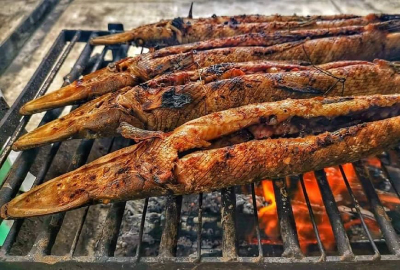
The fish is cleaned and prepared by removing the scales and bones, and then it is marinated in a mixture of lime juice, garlic, and spices such as cumin and black pepper. After marinating, the fish is cooked on a grill or asado (open fire), which gives it a smoky and savory flavor. The fish is often cooked whole and served with a side of rice and beans, and a spicy salsa made with tomatoes, onions, and chili peppers.
Pejelagarto asado is a dish that is traditionally served at special occasions such as weddings, family gatherings, and religious celebrations. It is also a popular dish at local restaurants and street vendors.
It’s important to note that this fish is a species considered in danger of extinction, but in Tabasco it’s managed by the local fishing community to be consumed in a sustainable way. Pejelagarto asado is a dish that showcases the rich flavors and traditions of Tabasco, and is a true taste of the local cuisine.
Pescado “sudado” en hoja momo (“Sweaty” fish in momo leaf)
Also known as “sweated fish in momo leaf,” is a traditional dish from the state of Tabasco, Mexico. It is made with a variety of fish, such as tilapia or catfish, that is seasoned with a variety of spices and herbs, such as cumin, oregano, and garlic. The fish is then wrapped in momo leaves, which are large, green leaves that are native to the region. The wrapped fish is then steamed or baked, allowing the flavors of the spices and herbs to infuse into the fish.
The dish is typically served with a variety of sides, such as rice, beans, or plantains. The momo leaves add a unique flavor and aroma to the fish, and the steaming or baking process keeps the fish moist and tender. Pescado “sudado” en hoja momo is often served at special occasions and celebrations, such as weddings and religious events.
Pijije en pipián (Pipije in pipián)
It is made from pijije, a freshwater fish that is native to the region, and is typically served in a pipián sauce. Pijije is a small, freshwater fish that is caught in the rivers and lagoons of Tabasco. It is known for its delicate and flavorful flesh, which is white and slightly flaky. The fish is usually cleaned, scaled and gutted before it is cooked.
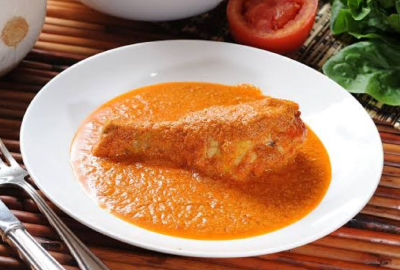
The pipián sauce that the pijije is served in is a traditional Mexican sauce made from ground pumpkin seeds. The sauce is made by toasting the pumpkin seeds, then grinding them and mixing them with a variety of spices, such as cumin, garlic, and chili peppers. The sauce is then thickened with a small amount of water or chicken broth, and is typically simmered for a short time to allow the flavors to meld together.
The pijije and pipián sauce are usually served together, with the fish being placed on top of the sauce. The dish is often garnished with fresh herbs, such as cilantro or parsley, and is typically served with rice or tortillas on the side.
Iguana guisada (Stewed iguana)
Known for its rich and flavorful taste. It is made using iguana meat, which is considered a delicacy in the region. The dish is prepared by marinating the iguana meat in a mixture of chili peppers, spices, and other seasonings, such as garlic, onion, and cumin. After marinating, the meat is cooked in a pot with tomato sauce, and sometimes with vegetables such as potatoes or chayote, until it is tender and flavorful.
Iguana guisada is traditionally served with rice, tortillas, or other traditional Mexican staples such as beans. Some people also serve it with a side of avocado or sour cream. Iguana meat is a lean and healthy protein source. It is high in protein and low in fat, and it contains a good amount of iron, vitamins, and minerals.
Eating iguana is not very common in other parts of Mexico, this is more common in Tabasco and in some parts of Veracruz and Campeche. The iguana meat is considered a delicacy and is traditionally hunted, although in recent years, many farmers have begun to farm iguanas for their meat. This has led to some concerns about the sustainability of this practice, as well as the treatment of the animals.
Puchero Tabasqueño (Tabasco puchero)
It is a hearty stew that is typically made with a variety of meats, vegetables, and spices. The dish is known for its rich and flavorful broth, which is made by simmering the meats and vegetables for several hours. The meats used in puchero tabasqueño can vary, but it is typically made with beef, pork, or chicken. The beef and pork are usually cut into large chunks, while the chicken is often cut into smaller pieces.
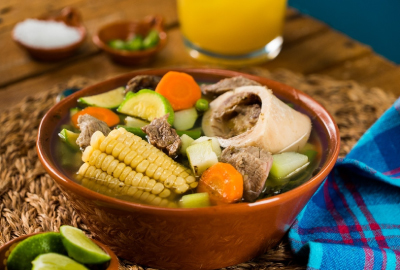
The meats are typically browned in a large pot before the vegetables and spices are added. The vegetables used in puchero tabasqueño can also vary, but it is typically made with potatoes, carrots, onions, and tomatoes. The vegetables are chopped into large pieces and added to the pot with the meats. They are simmered together for several hours to create a rich and flavorful broth.
The spices used in puchero tabasqueño can also vary, but it is typically made with cumin, oregano, chili powder, and bay leaves. These spices are added to the pot with the meats and vegetables and give the dish its unique and flavorful taste. Puchero tabasqueño is typically served with white rice and corn tortillas. The dish can also be garnished with cilantro, lime wedges, and sliced avocado for added flavor.
Puchero tabasqueño is a traditional and popular dish in Tabasco and it is served in many restaurants, either in family or traditional settings. It is also a dish that is often served during special occasions such as holidays and celebrations. It is a hearty, comforting, and flavorful dish that is enjoyed by many people in Tabasco and around the world.
Butifarra
Butifarra is another traditional dish from the state of Tabasco, Mexico. It is a type of sausage that is made with pork and a variety of seasonings and spices. The sausage is typically made with pork shoulder or belly, and it is often flavored with garlic, cumin, and chili powder.
The sausage is typically grilled or fried, and it is often served as a main course. It can be enjoyed on its own, or it can be used as a filling for tacos, burritos, and other traditional Mexican dishes. It can also be served with beans and rice, making it a complete and satisfying meal.
Tamales from Tabasco
Tamales are a traditional dish of Mexican cuisine that are found in many regions of the country, including Tabasco. Tamales from Tabasco have their own unique characteristics and variations, such as the “chanchamito”, “manea”, and “potze” which are considered some of the most representative dishes of the Tabasco gastronomy.
The “chanchamito” is a type of tamale that is made with a mixture of ground pork, tomato, chile, and spices, wrapped in banana leaves and steamed. The banana leaves are used to give the tamale a unique flavor and aroma, and also to keep it moist during the cooking process. The “chanchamito” is usually served with a tomato sauce and often accompanied by a cold beer.
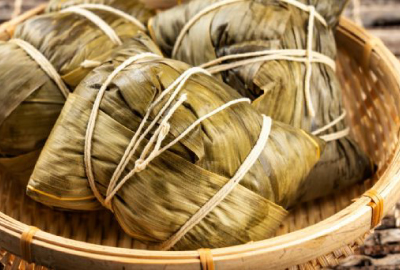
The “manea” is another variation of tamale that is also made with pork, but is seasoned with a traditional Tabasco sauce made from a blend of chiles and spices. This tamale is wrapped in banana leaves and steamed, giving it a unique taste and texture. The “manea” is also typically served with a tomato sauce and is a popular dish at parties and family gatherings.
The “potze” is a smaller version of tamale made with a mixture of corn dough, pork and chili pepper and wrapped in banana leaves. It is considered a traditional dish of the Tabasco cuisine and is often consumed as a snack or as an appetizer.
All of them are unique in taste and texture, and are typically served with tomato sauce, they are a staple at parties, family gatherings and also a popular snack.
Pollo en chirmol (Chicken in chirmol)
Also known as “chicken in chirmol sauce,” is another traditional dish from the state of Tabasco, Mexico. The dish is made with chicken that is cooked in a sauce made from a variety of ingredients, including tomatoes, onions, chilies, and spices. The chilies used in the sauce are typically a variety called “chilhuacle,” which are native to the region and have a unique, smoky flavor.
The sauce is typically thickened with ground nuts or seeds, such as sesame or pumpkin seeds, and is then poured over the cooked chicken. The dish is usually served with rice or tortillas, and is often garnished with fresh cilantro or lime wedges. Pollo en chirmol is a popular dish at home and in restaurants, and is often served as a main course for lunch or dinner. The sauce is typically spicy, with the heat level varying depending on the cook.
Pigua al mojo de ajo (Pigua with garlic sauce)
It is made from pigua, a type of shrimp that is native to the region’s rivers and streams. The dish is known for its flavorful and aromatic garlic sauce, which gives it its unique name, “mojo de ajo” meaning garlic sauce. The shrimp is typically cleaned and filleted, and then seasoned with a mixture of herbs and spices. The most common seasonings include cumin, oregano, and chili powder, which give the fish a distinct and robust flavor. Then it is then pan-fried or grilled until it is cooked through and crispy on the outside.
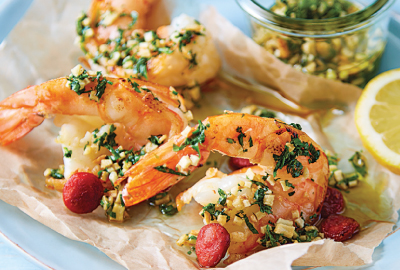
The mojo de ajo sauce is made by sautéing garlic and onions in oil until they are softened and fragrant. Tomatoes, cilantro, and lime juice are then added to the pan, along with additional spices such as cumin and chili powder. The sauce is simmered for a few minutes until it thickens, and then poured over the cooked fish.
Pigua al mojo de ajo is typically served with rice and beans, which are staples of Mexican cuisine, and sometimes with a corn tortilla. The dish is often enjoyed as a traditional family meal, and can also be found in local restaurants, that specialize in traditional dishes. Pigua al mojo de ajo is a great option for those who are looking for a flavorful and satisfying meal that showcases the region’s unique culinary heritage. It is also a good option for those who like spicy food, as it has a good balance of heat and flavor.
Frijol con puerco (Beans with pork)
Also known as beans with pork, is a traditional dish from the state of Tabasco, Mexico. It is a hearty and flavorful dish that is typically served as a main course. The dish is made with black or pinto beans that are cooked until they are soft and creamy. The beans are then mixed with diced pork, which is typically cooked with a variety of spices and seasonings. The pork is typically cooked until it is tender and juicy, and it adds a rich and savory flavor to the dish.
The dish is typically served with a variety of toppings, such as diced onions, cilantro, and lime wedges. Some variations of the dish may also include tomatoes, chiles, and other vegetables. The dish is typically served with rice and tortillas, making it a complete and satisfying meal.
Carne salada con chaya (Salted meat with chaya)
The dish consists of “carne salada”, which is salt-cured beef, cooked with chaya, a leafy green vegetable native to the region. Chaya, also known as “tree spinach”, is a popular ingredient in Tabasco cuisine, known for its slightly bitter taste and high nutritional value.
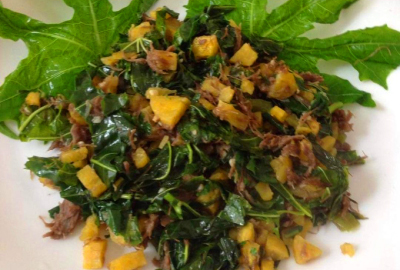
The beef is typically marinated in a mixture of salt and spices, such as cumin, garlic, and oregano, to give it a robust and flavorful taste. It is then cooked with the chaya leaves, which are typically chopped and sautéed with onions and tomatoes to create a savory and flavorful sauce.
Carne salada con chaya is often served with rice and beans, which help to balance out the flavors and add a hearty element to the dish. It is a popular dish in the Tabasco region and is often served at family gatherings and special occasions.
It is also a popular dish in the rural areas of Tabasco, where the beef is usually from the cattle that are raised by farmers. This dish is a good example of the traditional and rustic cuisine of Tabasco, where the ingredients are simple but full of flavor, and have a strong connection with the local culture and customs. It is also a dish that has been passed down through generations, and many families have their own unique recipe that they have been using for years.
Sote en verde o en colorado (Sote in green or red sauce)
The dish is typically made with beef or pork and is cooked in either a green or red sauce. The green version of the dish, known as sote en verde, is made with a sauce that is typically made from a blend of herbs and spices, such as cilantro, parsley, and epazote, along with chili peppers, garlic, and onions. The sauce is usually prepared separately from the meat and then poured over the cooked meat before serving.
The red version of the dish, known as sote en colorado, is made with a sauce that is typically made from a blend of chili peppers, such as guajillo or ancho, along with tomatoes, onions, and garlic. The sauce is usually prepared separately from the meat and then poured over the cooked meat before serving.
Both versions of the dish are typically served with white rice and often accompanied by other traditional Mexican side dishes such as refried beans and tortillas. Sote en verde o en colorado is considered a hearty, comforting dish that is often enjoyed by families and friends during special occasions, such as holidays and parties. It is also a common dish that can be found in local taquerias and other traditional Mexican restaurants in Tabasco.
Róbalo a la tabasqueña (Bass tabasco style)
It is a traditional dish made with a fish called Róbalo, which is a type of sea bass, and is typically served as a main course. The preparation of Róbalo a la tabasqueña begins with the fish being cleaned and filleted. The fillets are then seasoned with a mix of spices and herbs, which typically includes garlic, cumin, oregano, and lime juice. The fish is then marinated for several hours to allow the flavors to fully penetrate the fish.
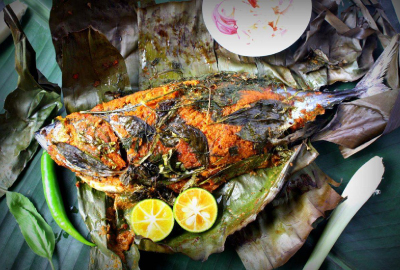
Next, the fish is cooked in a traditional clay oven or on a grill, which gives it a smoky flavor. The fish is then topped with a sauce made from tomatoes, onions, and green peppers. The sauce is typically cooked with a variety of spices and herbs, including cumin, oregano, and epazote (a type of Mexican herb) to give it a bold and flavorful taste. The sauce is also typically made with a variety of chili peppers, which gives it a spicy kick.
The dish is usually served with a side of rice, beans and tortillas, making it a full meal. One of the key characteristics of Róbalo a la tabasqueña is the use of traditional cooking methods and ingredients, which gives it a unique and authentic taste. It is a popular dish in Tabasco and can be found in many restaurants throughout the state, as well as in other parts of Mexico. The dish is also considered as a traditional dish of the Huasteca region, which is located in the states of Veracruz, Hidalgo, San Luis Potosi and Tamaulipas.
Overall, Róbalo a la tabasqueña is a delicious and flavorful dish that showcases the rich culinary tradition of Tabasco, Mexico. It is a dish that is loved by locals and visitors alike, and one that is sure to be a memorable culinary experience.
Tortuga en verde o en “sangre” (Turtle in green or red sauce)
This dish is made with turtle meat. The dish is typically prepared in one of two ways: either in a green sauce (tortuga en verde) or in a red sauce (tortuga en sangre). The green sauce version is made by blending together a variety of ingredients, such as fresh cilantro, parsley, garlic, onion, and jalapeño peppers. This mixture is then cooked in a pot with the turtle meat and simmered until the meat is tender. The finished dish is typically served with rice and beans.
The red sauce version, tortuga en sangre, is made by blending together a variety of ingredients, such as tomatoes, chile ancho, chile guajillo, garlic, onion and spices. This mixture is then cooked in a pot with the turtle meat and simmered until the meat is tender. The finished dish is typically served with rice and beans. Tortuga en verde or en sangre is considered to be a delicacy in Tabasco, Mexico. It’s important to note that the consumption of this dish is not recommended because of the conservation laws and the danger that it represents for the turtle population.
Tortitas de camarón en verde (Shrimp pancakes in green sauce)
It is a traditional dish that is made with shrimp and green salsa. The dish is typically served as a starter or appetizer and can also be enjoyed as a main course when accompanied with rice and beans.
The main ingredient in this dish is the shrimp, which is usually peeled and cleaned before being mixed with an onion, cilantro, and green salsa. The mixture is then formed into small cakes or patties, and fried until golden brown. The result is a crispy and flavorful shrimp patty that is packed with the taste of fresh cilantro and the tangy and spicy flavors of the green salsa.
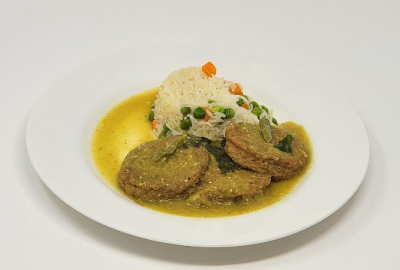
The green salsa that is used in this dish is typically made with fresh green tomatoes, jalapeno peppers, and cilantro, which are blended together and seasoned with salt and pepper. The salsa is then added to the shrimp mixture, providing the dish with a unique and delicious taste. This dish is a must-try for seafood lovers who enjoy bold and flavorful food. It is often served with fresh lime wedges and a side of refried beans or rice. The combination of the crispy shrimp and the tangy green salsa is sure to be a hit with any palate.
Additionally, it is important to note that Tabasco is well-known for its rich culinary tradition and for its spicy cuisine. Tortitas de camarón en verde is a representation of the state’s traditional and delicious food, and is a dish that is highly recommended for anyone visiting the region.
Pochitoque en verde (Pochitoque in green sauce)
It is a stew made from the pochitoque, a small freshwater fish that is found in the rivers and lagoons of Tabasco. The dish is known for its green color, which comes from the use of green tomatoes, tomatillos, and cilantro in the recipe. The fish is first cleaned and then cooked in a sauce made from the green tomatoes, tomatillos, and cilantro. The sauce is made by blending these ingredients together and then cooking them over low heat. The fish is then added to the sauce and cooked until it is tender.
The dish is traditionally served with a side of white rice and garnished with fresh cilantro. Some variations of the dish also include the addition of other vegetables such as onions, garlic and peppers. Pochitoque en verde is a flavorful and healthy dish that is popular in Tabasco and it is considered as a specialty of the region. It has a unique combination of flavors and textures, with the fish being tender and flaky, and the sauce being tangy and slightly spicy.
The pochitoque is a freshwater fish that is not very common in other regions of Mexico, which makes this dish a unique and must-try for those who visit Tabasco. It is also a dish that has a great cultural significance in the region, as it is part of the traditional cuisine of the people of Tabasco. Pochitoque en verde is a delicious, traditional dish that is worth trying for anyone visiting Tabasco, Mexico, and looking to experience the local cuisine.
Ostiones ahumados ‘al tapesco’ (Smoked oysters ‘al tapesco’)
It is a traditional dish from the state of Tabasco in Mexico. It is a variation of the classic smoked oyster dish, with a unique twist that is specific to the region.The dish is made with fresh oysters that are first cleaned and shucked. They are then marinated in a mixture of spices and seasonings that include chiles, garlic, and lime juice. The oysters are then placed in a smoker and left to smoke for several hours.
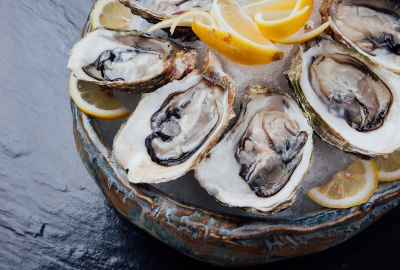
The dish is often served as an appetizer or a side dish, and is a popular choice among seafood lovers. The smoky flavor of the oysters combined with the bold and spicy flavors of the tapesco sauce make for a unique and delicious taste experience.
The dish is typically enjoyed with a cold beer or a glass of white wine, making it a perfect option for casual gatherings or parties. It is also a popular dish at seafood restaurants and bars in Tabasco, and is a must-try for anyone visiting the region.
Huliche
The dish is made from a type of freshwater fish called huachinango, which is also known as red snapper. The fish is typically cooked in a tomato-based sauce that is made with a variety of spices and herbs, including chili peppers, garlic, and cumin. The dish is typically served with white rice and is often accompanied by a side of beans or vegetables. The fish is usually cooked until it is flaky and tender, and the sauce is rich and flavorful, with a perfect balance of heat and acidity.
It’s very popular in Tabasco and can be found in many traditional restaurants and street vendors. It is often served as a main course and is considered a staple of the local cuisine. The dish is also enjoyed during special occasions and celebrations, such as weddings and religious festivals.
Huliche is not only a delicious dish but also a cultural tradition in Tabasco, it’s a way of preserving the local cuisine, and it’s a reflection of the local ingredients and the way of cooking of the Tabasco people. It’s a dish that is passed down from generation to generation and it is also a way of celebrating the local culture. It is an excellent example of the rich and diverse gastronomy that can be found in Mexico. It is a dish that is enjoyed by locals and visitors alike, and it is a true representation of the flavors and traditions of Tabasco.
Chilmole de pollo (Chicken chilmole)
It is a traditional dish that is made with shredded chicken, a variety of spices and a thick, rich sauce made from a combination of chocolate, chili peppers, and other ingredients. The dish is typically served with rice and tortillas, and is known for its bold, complex flavor.
The dish is believed to have originated with the Maya and Aztec civilizations, who used a similar sauce made from chocolate and chili peppers to flavor their meats. The recipe has evolved over time, but still maintains its traditional ingredients.
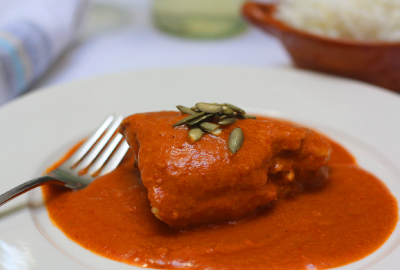
To make chilmole de pollo, the chicken is first cooked and shredded. The sauce is then made by blending together chili peppers, chocolate, spices, and other ingredients such as cloves, cinnamon, and allspice. The sauce is then heated and added to the shredded chicken, and cooked until thick and flavorful.
The dish is often garnished with fresh cilantro and served with rice and tortillas on the side. It is a popular dish in Tabasco and is enjoyed by locals and visitors alike for its unique and delicious flavor.
Botanas de queso de poro (Pore cheese snacks)
It is a traditional snack or appetizer from Tabasco. It is made with poro cheese, which is a type of soft, white cheese that is made from cow’s milk. The cheese is cut into small cubes and then fried until crispy and golden brown. It is typically served with a dipping sauce made from tomato and chili peppers.
The dish is a popular snack in Tabasco and is often served as a starter in traditional restaurants. It is a delicious and unique way to enjoy the rich and creamy flavor of poro cheese.
Typical Drinks of TABASCO
Polvillo
It is made from a fermented corn dough called masa, which is mixed with water and sugar, and then left to ferment for several days. The final product is a thick, sweet, and slightly sour liquid that is typically served cold.
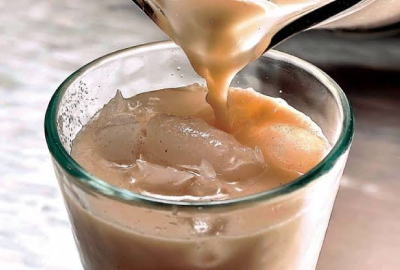
One of the unique aspects of Polvillo is its preparation process, which is a traditional practice passed down through generations. The masa is made by grinding dried corn kernels into a fine powder and then mixing it with water and a small amount of lime. The lime helps to soften the corn and also provides the necessary enzymes for fermentation.
Once the masa is ready, it is left to ferment for several days, depending on the desired flavor and alcohol content. During this time, the natural yeasts present in the masa convert the sugars into alcohol and carbon dioxide, creating the characteristic sour and effervescent taste of Polvillo.
Polvillo is often served as a refreshing drink, particularly during hot weather, and is often enjoyed by the local people of Tabasco. It is also a popular drink at festivals and celebrations, and can be served with a variety of toppings such as fruits and spices to enhance the flavor.
Agua de pitahaya (Dragon fruit water)
Also known as dragon fruit water, is a popular drink in the gastronomy of Tabasco, made with the juice of the dragon fruit, also known as pitahaya, this drink is known for its refreshing taste and vibrant pink color. The dragon fruit is a tropical fruit that is native to Mexico and Central America. It is known for its sweet and slightly tangy taste, which is perfect for making refreshing drinks like agua de pitahaya.
To make agua de pitahaya, the fruit is first cut open and the flesh is scooped out. The flesh is then blended or juiced to extract the juice. The juice is then mixed with water and sweetened with sugar or honey to taste. Some variations of the drink also include the addition of lime or mint for added flavor. Agua de pitahaya is typically served chilled and is perfect for hot summer days.
Agua de matalí (Matali water)
This traditional drink is very similar to a soft drink that is prepared with matalí leaves. This plant has green and magenta leaves. For its preparation, the leaves are placed in water and boiled until the water turns purple. Add a little lemon, strain and sweeten to taste. One of the most outstanding characteristics of this drink is its pink color, a very natural tone that can vary in intensity, it is also very refreshing and with a delicate flavor on the palate.
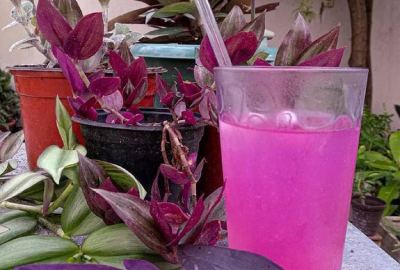
Agua de matalí is typically served cold and is a popular drink during the hot summer months. It can be enjoyed on its own or as an accompaniment to traditional Mexican meals such as tacos and tamales. The drink is also commonly sold by street vendors and at local markets.
In addition to its delicious taste, agua de matalí is also known for its many health benefits. The plant is rich in vitamins and minerals and is believed to have anti-inflammatory and antioxidant properties. It is also said to help with digestion and to boost the immune system.
Guarapo
Guarapo is another popular drink in the gastronomy of Tabasco, Mexico. It is made with sugarcane juice and is known for its sweet and refreshing taste. Sugarcane is a tropical plant that is native to Southeast Asia and was introduced to Mexico by the Spanish during the colonial period. It is a staple crop in Tabasco and is used to make a variety of products, including guarapo.
To make guarapo, the sugarcane is first cut into small pieces and then pressed to extract the juice. The juice is then filtered and sweetened with sugar or honey to taste. Some variations of the drink also include the addition of lime or mint for added flavor. Guarapo is typically served chilled and is often enjoyed as a refreshing drink on hot summer days.
Balché
It is a fermented beverage made from the bark of the balché tree, also known as the lonchocarpus longistylus. The tree is native to the region, and its bark has been used for centuries by the Maya and other indigenous people to make a variety of traditional medicines and beverages.
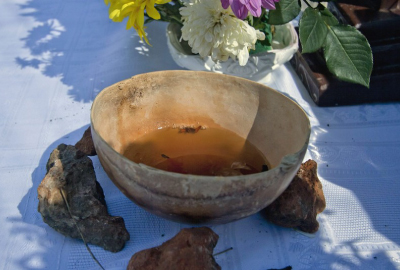
The process of making balché involves collecting the bark of the tree and soaking it in water for several days. This water is then mixed with honey and sometimes other ingredients such as fruits or spices, depending on the recipe. The mixture is then left to ferment for several weeks. The result is a sweet, slightly effervescent beverage with a slightly bitter aftertaste. It has a dark brown color, and it is traditionally served cold.
Balché is considered a sacred drink among the Maya, and it is often used in religious ceremonies, as well as for medicinal purposes. It is believed to have aphrodisiac properties and is also used as a tonic to boost energy and vitality.
In recent years, the production of balché has increased, and it can now be found in bars and restaurants in Tabasco, as well as in other parts of Mexico. It is also possible to find it in bottles, in some places, and it is a drink that is gaining recognition as a unique and delicious drink that is part of the gastronomy of Tabasco.
Chorote
Chorote is made from fermented corn. It is a pre-Columbian beverage that has been enjoyed by the indigenous people of the region for centuries. The process of making Chorote involves soaking dried corn in water and then adding natural ingredients such as wild yeast, lime, and honey to ferment the mixture. The resulting drink is a slightly sweet and sour liquid that is enjoyed cold.
Chorote is traditionally served in a clay pot and is often accompanied by traditional Mexican snacks such as tamales or empanadas. It is also a popular drink at festivals and celebrations in the region. Many people in Tabasco believe that Chorote has medicinal properties and it is often consumed to relieve stomach pain or as a natural remedy for colds and flu.
Pinole
Known for its rich and unique flavor, It is made from a type of corn called “pinole,” which is ground into a fine powder and mixed with water, sugar, and cinnamon to create a sweet and slightly spicy beverage.
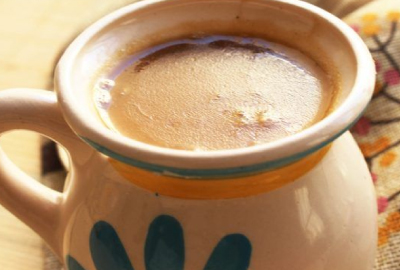
The origins of pinole can be traced back to the ancient Maya and Aztec civilizations, who used it as a source of energy and nutrition. The drink was made by mixing ground corn with water and other ingredients, and was often consumed by warriors and runners to sustain them during long journeys.
Today, pinole is enjoyed by people of all ages in Tabasco, and can be found in street vendors, local markets and traditional restaurants. It is typically served hot, and is often consumed as a morning or afternoon pick-me-up, or as a dessert after a meal.
To make pinole, the corn is first roasted until it turns a golden brown color and then it is grinded into a fine powder. The powder is then mixed with water, sugar and cinnamon. Some variations may also include vanilla, cocoa powder, or other spices to enhance the flavor. Some people prefer to strain the mix to have a smooth texture, but many people prefer to have it a little bit grainy.
Agua de guanábana (Soursop water)
Also known as soursop water, is a refreshing drink made from the fruit of the guanábana tree. The fruit is known for its sweet and slightly tart flavor and is often used to make drinks and desserts. To make the drink, the flesh of the fruit is blended with water and sugar. The mixture is then strained to remove any seeds or pulp. The resulting drink is a sweet and refreshing beverage with a unique tropical flavor. It is often served cold and is a popular drink in the summer months.
Pozol
Pozol is a traditional indigenous drink of Tabasco, Mexico. It is made by mixing ground corn, water, and a small amount of lime to create a thick paste. This paste is then mixed with water to create a drinkable liquid. Pozol is typically served cold and is often accompanied by toppings such as chopped fresh vegetables, chili peppers, and/or meat. The drink has a long history dating back to pre-Columbian times, and it is closely tied to the culture and traditions of the region.
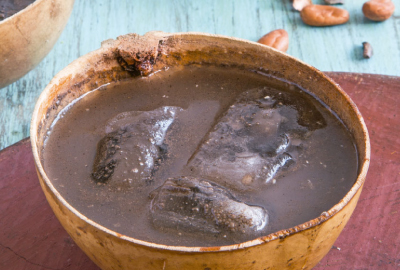
The preparation of Pozol is an important part of the local culture, and it is often passed down through families.
The process of making Pozol involves a combination of traditional methods and modern techniques. It is usually prepared in large batches and is often made by women, who are responsible for the preparation of food in traditional indigenous households. Pozol is also a symbol of identity and resistance for the people of Tabasco. The indigenous people of Tabasco have faced a long history of marginalization, and Pozol is seen as a way to preserve their culture and heritage.
In recent years, Pozol has been gaining popularity outside of Tabasco, and it is now enjoyed by people all over Mexico and even internationally. Many street vendors and small restaurants in Tabasco now serve Pozol, and it is also available in some markets and supermarkets. Pozol is a unique and delicious drink that is an important part of the gastronomy and culture of Tabasco, Mexico.
Tepache
It is made from fermented pineapple. The process of making Tepache involves cutting the pineapple into small pieces and then soaking it in water with sugar and cinnamon. The mixture is then left to ferment for several days, resulting in a sweet and slightly effervescent liquid.
Tepache is traditionally served cold and is often enjoyed as a refreshing drink on hot days. It is also a popular drink at parties and celebrations in Tabasco. Like Chorote, Tepache is believed to have medicinal properties and is often consumed to aid digestion or as a natural remedy for headaches.
Typical Sweets and Desserts of TABASCO
Dulce de guapaque (Sweet of guapaque)
It is a traditional sweet dish from the state of Tabasco in Mexico. The dish is made from Guapaque, this strange fruit looks like a small tamarind, about the size of a grape. The shell, the color of the pulp and even the seed are similar to those of tamarind and, as if that were not enough, the flavor is quite similar, due to its bittersweet notes, but unlike this one, its shell breaks easily with the yolk. of the fingers and its pulp is a kind of plush sponge, like velvet, very pleasant to the palate.
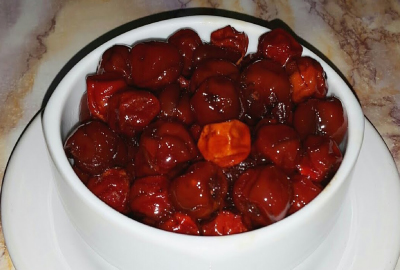
The traditional method of making dulce de guapaque involves peeling and mashing the fruit, then mixing it with sugar, cinnamon, and vanilla to create a thick, sweet paste. The paste is then shaped into small balls or rolls, and sometimes coated in coconut or other nuts for added texture and flavor.
Dulce de guapaque is a popular dessert in Tabasco, and is often served as a sweet treat after meals. It is also a traditional food for special occasions, such as weddings and religious celebrations. The unique flavor and texture of the guapaque fruit make this dish a unique and delicious addition to the gastronomy of Tabasco.
In addition to being a delicious dessert, dulce de guapaque is also believed to have health benefits. The guapaque fruit is high in antioxidants and has been used in traditional medicine to help with digestion and to boost the immune system.
Dulce de nance (Sweet of nance)
It is made from the fruit of the nance tree, which is also known as the golden spoon tree or yellow cherry tree. The fruit is small and has a yellowish-orange color, with a slightly tart taste.
To make dulce de nance, the fruit is first harvested and then cleaned. The seeds are removed and the fruit is then boiled in water with sugar until it becomes a thick paste. The paste is then spread out on a flat surface and left to dry. Once dry, it can be cut into small pieces and served as a sweet snack.
Dulce de nance is a popular treat in Tabasco and is often served as a dessert or as a sweet accompaniment to coffee or tea. It is also used to make other traditional sweets such as candied nance and nance marmalade.
Dulce de cocoyol (Cocoyol candy)
Also known as “sweet coconut,” is a traditional sweet treat from the state of Tabasco, Mexico. It is made from the sap of the cocoyol palm tree, which is harvested and then cooked down with sugar and cinnamon to create a thick, sticky syrup.
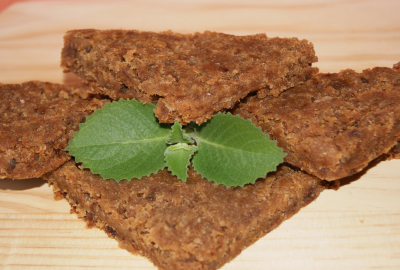
The process of making dulce de cocoyol is a labor-intensive one. The sap must be collected early in the morning, before the heat of the day sets in, as the sap will begin to ferment as the day goes on. The sap is collected by making a small incision in the trunk of the cocoyol tree and allowing the sap to flow out into a container. Once collected, the sap is then brought back to the kitchen to be cooked.
To make the dulce de cocoyol, the sap is first boiled down to reduce the water content. Then, sugar and cinnamon are added to the mixture and it is cooked on low heat for several hours until it thickens into a syrup. The syrup is then poured into molds and allowed to cool and solidify.
Dulce de cocoyol is typically served as a dessert or a sweet snack. It is often cut into small squares and enjoyed on its own, or it can be used as a topping for ice cream or pancakes. The sweet, sticky syrup has a unique and complex flavor, with notes of coconut, cinnamon, and caramel.
Overall, dulce de cocoyol is a delicious and unique treat that is a staple of the gastronomy of Tabasco, Mexico. Its production and consumption is a tradition in the region, passed from generation to generation, and is a delicious way to taste a piece of the culture and history of Tabasco.
Panetela
Panetela is another popular sweet from Tabasco. It is a traditional bread pudding that is made from bread, milk, eggs, sugar, and cinnamon. The bread is soaked in milk and eggs, then sweetened with sugar and flavored with cinnamon. It is then baked in the oven until golden brown and served warm.
Panetela is a comforting and satisfying dessert that is often served after meals. It is a popular treat during the holidays, and is often served as a dessert at family gatherings. It can also be enjoyed with a cup of coffee or tea as a sweet breakfast treat.
Queques
Queques are a traditional dessert from the Gastronomy of Tabasco. They are typical Mexican wheat flour and piloncillo cookies, traditionally made with a sawn or wavy edge. For a sufficient quantity of cakes for the whole family, 250 grams of flour, 180 grams of butter, 120 grams of brown sugar, 50 grams of ground piloncillo, one egg yolk, one teaspoon of anise seeds, half a teaspoon of cinnamon are used. and a teaspoon of water.
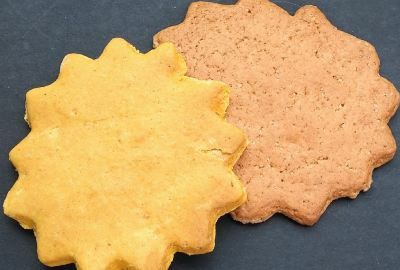
Grind the piloncillo together with the anise seeds and reserve. Knead the flour with the butter, brown sugar and cinnamon and add the piloncillo and anise mixture, kneading again. Add the egg yolk and water and knead until well integrated. Spread the dough on plastic wrap, wrap and refrigerate for half an hour. Cut the cakes and bake at 180 °C until golden brown (approximately 30 minutes).
Queques are often served as a dessert after a traditional meal in Tabasco, and they can also be enjoyed as a sweet treat throughout the day. In addition to being a popular dessert in Tabasco, queques are also a popular item at traditional celebrations and festivals in the region. They are often served at weddings, birthdays, and other special occasions.
Dulce de plátanos caramelizados (Sweet caramelized bananas)
It is made from ripe plantains that are sliced, fried in oil, and then caramelized with sugar. The caramelized plantains are then shaped into small balls and served as a dessert or a sweet snack.
The flavor of this sweet is sweet and slightly fruity, with a rich and creamy texture. The caramelization process adds a depth of flavor and a slight crunch to the plantains. It is often served with a cup of hot cocoa or coffee, making it a perfect treat to enjoy on a cold day.
Joloches
Joloches are typical sweets from Jahuacapa, a Tabasco town in the municipality of Jalapa, 41 km south of Villahermosa. There are mainly sweet potatoes with soursop and sweet potatoes with pineapple, but they all have in common that they are wrapped in joloches, the dry leaves of the corn cob.
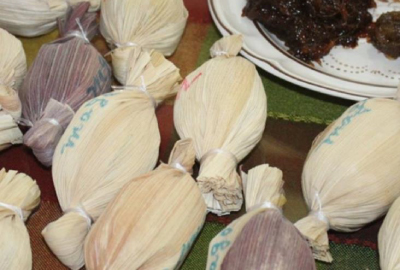
Put the sweet potato mass, the soursop juice, and the sugar in a pot, preferably made of copper, and cook over moderate heat for an hour, always stirring with a wooden spoon or shovel. Let it cool and form the sweets in an oval shape to wrap them in joloches and tie them with thin strips of the same leaf.
Dulce de “oreja de mico” (Sweet “monkey’s ear”)
The name “oreja de mico” translates to “monkey ear” in English, and refers to the shape of the sweet which is oval and slightly curved, resembling the shape of a monkey ear.
This sweet is made from masa, a type of dough made from ground corn, which is shaped into the oval shape and then deep-fried. The fried dough is then dipped in a sweet syrup made from sugar and cinnamon, giving it a sweet and slightly spicy flavor. It is often served as a dessert or a sweet snack, and is a popular treat to enjoy with a cup of hot coffee or tea.
Handmade chocolates
Tabasco is known for its rich culinary heritage and delicious sweets and desserts. One of the most popular and beloved desserts in the region is handmade chocolates. These chocolates are made using traditional techniques and are crafted using only the finest ingredients, making them a true delicacy for chocolate lovers.
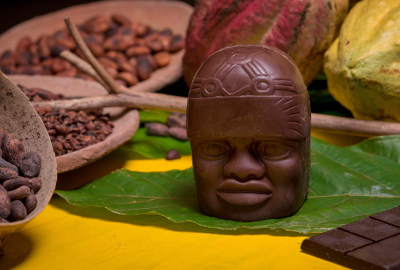
These are made using a variety of techniques, from hand-rolling to molding. The chocolate used in these chocolates is made from high-quality cocoa beans that are sourced from local farms in Tabasco. The beans are carefully selected for their flavor and quality, and are then roasted and ground to create a rich, smooth chocolate.
Once the chocolate is made, it is then shaped and flavored using a variety of ingredients. Some of the most popular flavors used include vanilla, cinnamon, nutmeg, and chili pepper. These flavors are carefully chosen to complement the chocolate and add a unique twist to the traditional chocolate taste.
The chocolates are then packaged and sold in beautiful and elegant packaging, making them a great gift for any occasion. They are also often sold in traditional markets and at local festivals, where locals and tourists alike can sample the delicious treats.
Sisgua
Corn is one of the staple foods of Mexico used by Tabasqueños to make a sweet cake called: sisquaj. The sisguaj carries cow’s milk, chicken eggs and cane sugar.
A 4-portion cake can be prepared with 10 young corn, 250 grams of sugar, 250 ml of milk, 3 eggs, 250 grams of butter, 125 grams of lard, 125 grams of aged cheese and icing sugar.
Cover a baking mold with waxed paper, grease it and place the smoothie. The oven is preheated and the cake is baked at 200 °C for 2 hours. Sprinkle with icing sugar after unmolding.
More Tourist Attractions in TABASCO

Beaches in Tabasco
The state is home to a wide variety of beaches, each offering a unique experience for visitors. From secluded coves to bustling beaches, Tabasco has something to offer for everyone.… Read More
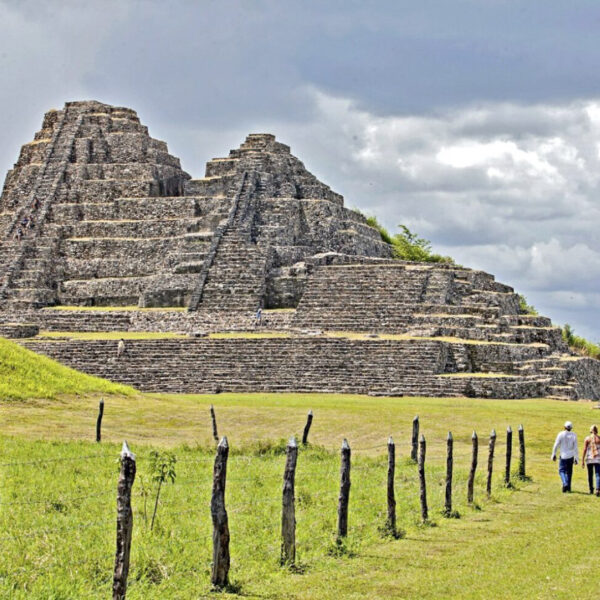
Archaeological Sites in Tabasco
Tabasco has been occupied by various indigenous groups for thousands of years, and as such, it is home to a variety of archaeological sites that offer a glimpse into the past. … Read More

Villahermosa
Known for its lush tropical forests and diverse wildlife, Villahermosa is a popular destination for tourists looking to experience the unique culture and natural beauty of Mexico.… Read More
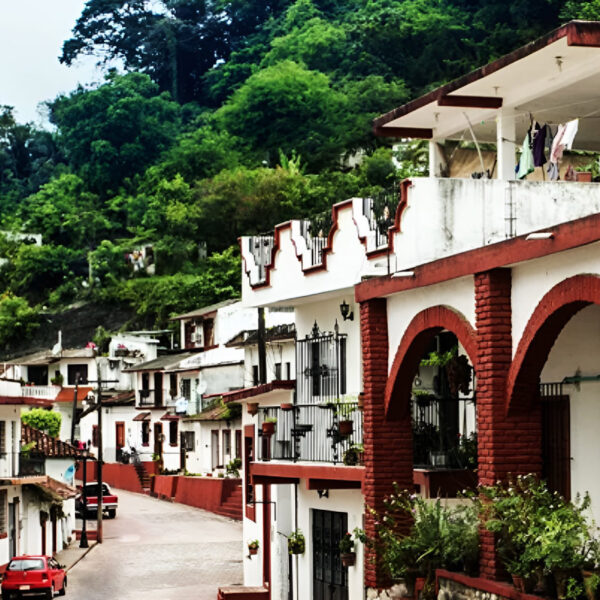
Magical Towns in Tabasco – Tapijulapa
The Magical Town in Tabasco, Tapijulapa, is considered an important destination for both national and international tourists, and is recognized for its natural beauty, traditional customs, and unique attractions.… Read More
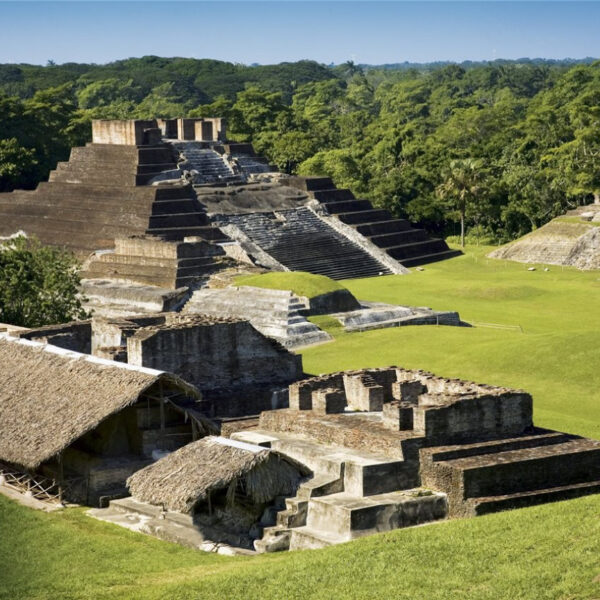
Comalcalco
A city located 56 kilometers northwest of Villahermosa, well-known for its Mayan archaeological site on its outskirts, which boasts impressive ruins from the 1st century AD, belonging to the classical era of the Mayan civilization.… Read More
Flights & Hotels in TABASCO
More Tourist Attractions in MEXICO

Gastronomy
The Gastronomy of Mexico has a great diversity of typical dishes, which is why it was recognized by UNESCO as Intangible Heritage of Humanity. The basic and representative ingredients of Mexican dishes are: corn, coriander, chili, beans, piloncillo, nopal and tomato. Mexican cuisine is also characterized by its sauces, which serve as an accompaniment to traditional dishes, prepared based on spices.… Read More

Capital Cities
Folklore, gastronomy, literary culture, art and exhibitions, is what you will find in the capitals of the states of Mexico. To the north, colonial Mexico, Puebla, Guadalajara, Guanajuato, the Sonoran desert and the California peninsula. To the east Veracruz and the gulf. To the west Acapulco, Oaxaca and Tuxtla Gutiérrez. And to the south the Riviera Maya and the pyramids of Chichén-Itzá, Tulúm and Cobá in Yucatán, Palenque in Chiapas, the cenotes, and the Central American jungles.… Read More

Archaeological Sites
The Archaeological Zones are the cultural past of every Mexican. You will be amazed at the ambient, nature and the environment that surrounds them. Climbing to the top or being around it will take us back in time to admire every detail. México is a country of culture and traditions, many of which we have inherited from the pre-Hispanic inhabitants of this vast territory, although it is true that there were more settlements in the central and southern part of the country, it is also possible to find some archaeological remains in the north.
… Read More

Traditions in Mexico
It is practically impossible to make a meticulous, and above all, accurate selection of the places to visit in Mexico. Each place that our country houses is unique and beautiful in its own way. Mexico, with its nearly 2 million km², has a large number of scenarios to offer, as well as endless activities to do. Do not lose your way and enter the places to visit in Mexico. In Mexico, apart from the beaches and its famous archaeological sites, there are many other really interesting sites and activities that you should know. In the surroundings of the main cities you will find places full of culture and tradition, where you can spend relaxing, interesting and fun vacations. On your trip through Mexico you cannot stop obtaining souvenirs, the crafts that are made here are of the highest quality and recognized worldwide. A shopping tour cannot be missed.… Read More

Ecotourism and Adventure
Mexico is one of the best countries for Ecotourism as it has a great variety of flora and fauna, as well as a large number of refuges for extraordinary species. You can enjoy recreational activities of appreciation and knowledge of nature through contact with it, such as: stargazing, observation of natural attractions, wildlife and bird watching. Throughout México there are more than 176 protected natural areas, 5 of them considered by UNESCO as Natural Heritage of Humanity. Just for this and much more, we believe that Mexico is a Paradise for Ecotourism.… Read More

States Of Mexico
Mexico has an incredible diversity of landscapes, where the beauty of its beaches, internationally recognized, stands out. In its vast territory of coasts, there are beaches of unparalleled beauty, and colorful landscapes. A large network of first-class hotels and tourist services is available to visitors to these beaches. Mexico is also mystical places, dotted with archaeological testimonies inherited from its original inhabitants. Monuments made by the Mayas, Aztecs and Toltecs are located in magical landscapes, like lighthouses in an ocean of natural beauty. They offer visitors buildings that tell their history, and museums that collect their cultural heritage. And that keep alive ancestral traditions, in ceremonies and festivals, where you can enjoy cultural activities and entertainment.… Read More

Beaches
On the Beaches of Mexico you can immerse yourself in the intense blue ocean of the Pacific bays, sunbathe on the shore of the warm and transparent waves of the Caribbean Sea in Quintana Roo or even rest on the beautiful coasts of the Gulf of Mexico. Mexican beaches hide wonderful secrets for the traveler. By visiting them, in addition to enjoying the excellent climate and water activities, you can discover splendid archaeological sites and interesting colonial cities without traveling long distances.… Read More

Magical Towns
A Magical Town is a place with symbols and legends, towns with history that in many cases have been the scene of transcendent events for our country, they are places that show the national identity in each of its corners, with a magic that emanates from its attractions ; visiting them is an opportunity to discover the charm of Mexico. The Magical Towns Program contributes to revalue a set of populations in the country that have always been in the collective imagination of the nation and that represent fresh and varied alternatives for national and foreign visitors. A town that through time and in the face of modernity, has conserved, valued and defended its historical, cultural and natural heritage; and manifests it in various expressions through its tangible and intangible heritage. A Magical Town is a town that has unique, symbolic attributes, authentic stories, transcendent events, everyday life, which means a great opportunity for tourist use, taking into account the motivations and needs of travelers.… Read More

